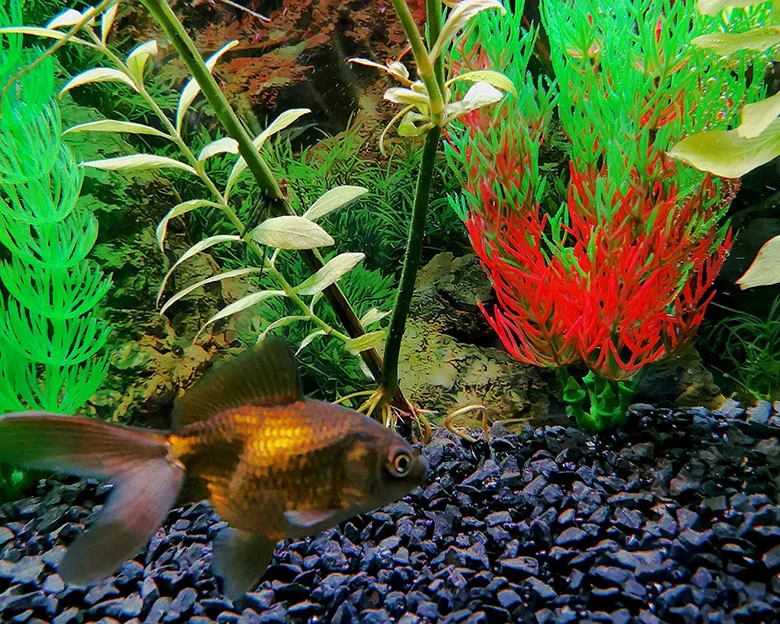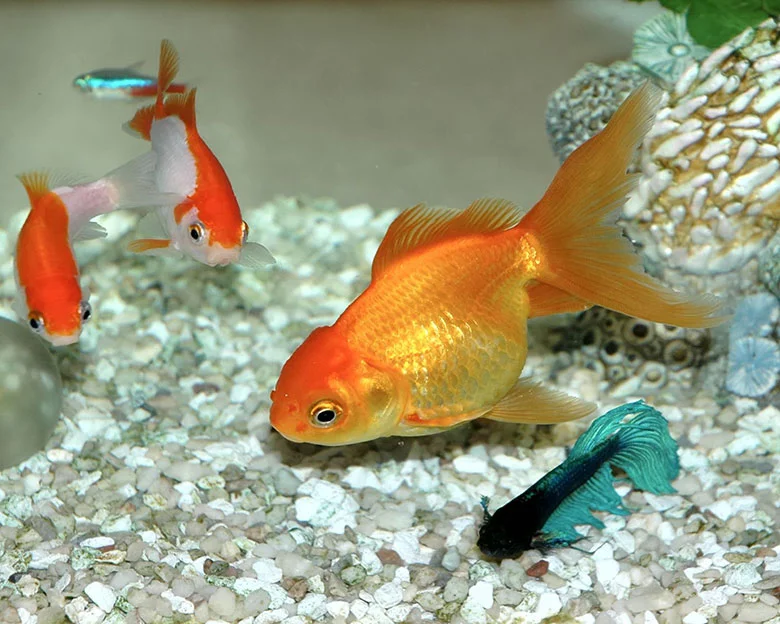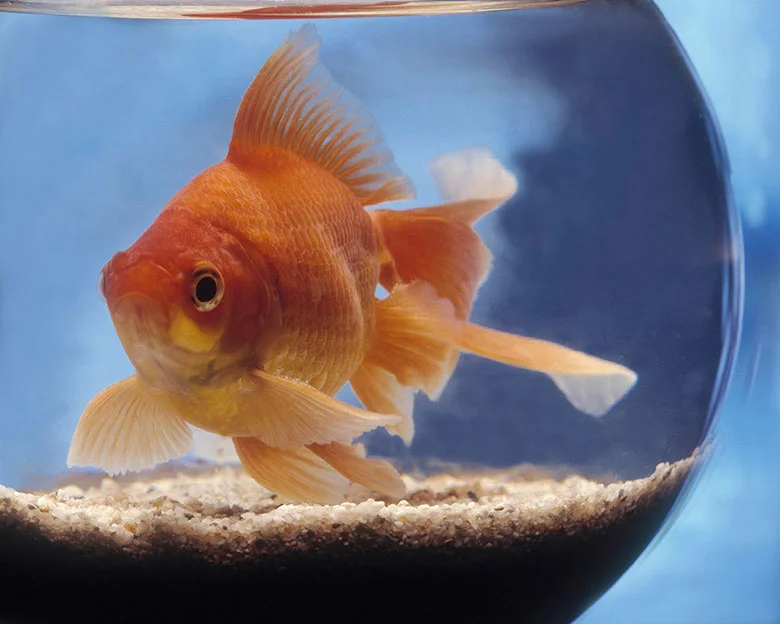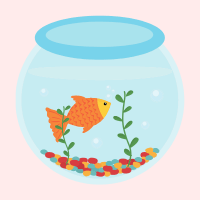Goldfish are more than just pets; they’re your aquatic companions searching for the best substrate for goldfish. They bring joy and a sense of calm to your life, and you want to provide them with a healthy and comfortable environment. One crucial aspect of setting up a goldfish tank is choosing the right substrate.
But with so many options out there, it can be overwhelming to make a decision. Don’t worry, though – we’re here to guide you through the process of choosing the best substrate for your goldfish tank.
In this article, we’ll explore the benefits of having substrate, the different types of inert substrates available, and the pros and cons of two popular options: gravel and sand. By the end of this article, you’ll have a clear understanding of what substrate is best for your goldfish and why.
So, let’s dive in!
Key Takeaways
- Goldfish don’t require substrate, but it can provide a surface for beneficial bacteria to grow.
- Inert substrate is the best option for goldfish tanks to avoid changing water parameters.
- Gravel is easier to clean than sand.
- Personal preference plays a significant role in choosing substrate, and there are various options available, including aquarium gravel and sand.
Benefits of Substrate

You’ll be happy to know that a substrate in your goldfish tank provides numerous benefits for your fish’s health. One of the most important benefits of substrate is the increased surface area it provides for beneficial bacteria to grow. These bacteria play a crucial role in maintaining the nitrogen cycle in your tank, converting toxic ammonia into less harmful compounds that can be safely removed through water changes.
Without a substrate, the bacteria would have fewer surfaces to grow on, making it harder to maintain a healthy aquarium environment. The importance of beneficial bacteria growth cannot be overstated. These bacteria are essential for breaking down waste and maintaining water quality in your tank.
With a healthy colony of bacteria growing on your substrate, you can be sure that your goldfish are living in an environment that supports their well-being. Additionally, a substrate provides a natural habitat for a variety of other organisms, such as snails and worms, that help to further break down waste and maintain a healthy ecosystem in your tank.
Types of Inert Substrates
Consider using inert options such as gravel or sand for your goldfish tank to avoid altering water parameters, while also providing a surface for beneficial bacteria to grow. Gravel is a popular option as it is easy to clean and comes in a variety of colors and sizes to match your desired aesthetic. Sand, on the other hand, can be more challenging to clean and may require regular stirring to prevent waste buildup. However, sand can provide a more natural look and feel for your tank, and some fish may even prefer it for burrowing and foraging.
When choosing a substrate for your goldfish tank, it’s essential to consider both decorative options and maintenance considerations. The table below outlines some popular inert substrate options, their benefits, and potential drawbacks to help you make an informed decision. Ultimately, the best substrate choice will depend on your personal preferences, the needs of your fish, and your willingness to maintain the tank.
Pros and Cons of Gravel

Using gravel in your tank can add a natural touch while providing a surface for beneficial bacteria to flourish, but be mindful of its potential drawbacks.
Gravel is easier to clean than sand, making it a popular choice among goldfish owners. However, it can be harder to maintain a healthy environment with gravel than with sand because it can trap debris and waste in its crevices. To clean gravel, you can use a siphon vacuum to remove debris from the surface. It’s important to regularly clean the gravel to prevent harmful bacteria from growing.
One downside of gravel is that it can be abrasive and potentially harm your fish if they accidentally ingest it. Additionally, the small spaces between the stones can trap uneaten food and waste, causing ammonia levels to rise.
Overall, gravel is a good option for goldfish tanks as long as it’s regularly cleaned and monitored for any potential issues. Need tips on caring for your goldfish? Check out our latest guide.
Pros and Cons of Sand

Sand is a popular choice for aquarium owners who want a natural look and easier waste removal. However, there are both advantages and disadvantages to using sand as a substrate in a goldfish tank.
Advantages of using sand in a goldfish tank include its natural appearance and the fact that it conceals fish waste better than gravel. Additionally, goldfish enjoy sifting through sand, which can provide them with enrichment and stimulation.
However, there are also some disadvantages to using sand. Sand can be more difficult to clean than gravel, as it requires more frequent stirring to prevent anaerobic pockets from forming. Additionally, some types of sand, such as aragonite sand, can alter water parameters in a way that may be harmful to goldfish.
Maintenance tips for sand substrates include using a siphon to remove debris, stirring the sand regularly, and avoiding overfeeding to prevent excess waste buildup. It’s also important to choose a sand that is appropriate for goldfish and to monitor water parameters regularly to ensure they remain within safe levels.
Overall, while sand can be a great choice for a goldfish tank, it’s important to weigh the advantages and disadvantages and to be prepared for the maintenance required to keep it clean.
Frequently Asked Questions
Do Goldfish Need Substrate In Their Tank?
Goldfish don’t need substrate in their tank, but it has pros and cons. Substrate provides more surfaces for beneficial bacteria to grow, but can change water parameters. Inert substrate, like gravel, is best for avoiding such changes. Types and costs vary based on personal preference.
Can Changing The Substrate In An Established Tank Be Difficult?
Changing the substrate in an established tank can be a major hassle, but with some tips for transitioning, it can be done. Choosing the right substrate type, like inert gravel, can make maintenance easier and avoid altering water parameters. Remember to consider personal preference and the needs of your goldfish before making any changes. Metaphorically speaking, it’s like rearranging furniture in a well-lived in space.
Are There Any Substrate Options That Can Significantly Change Water Parameters?
pH neutral substrates are the best choice for avoiding significant changes in water parameters. Natural options like sand and planted substrates can alter pH levels, while synthetic options like inert gravel are less likely to.
Is Bare Bottom Tank An Option For Goldfish Tanks?
So, you’re considering a bare bottom tank for your goldfish? It’s a great option for easier waste removal, but keep in mind that it doesn’t provide the surface area for beneficial bacteria growth like substrate does. If you want alternatives to substrate, consider using decorations or plants to provide hiding places for your fish.
Does The Color Of The Substrate Affect The Health Of Goldfish?
The color of the substrate can impact the health of goldfish if it’s dyed and contains harmful chemicals. Safety of dyed substrates is a concern, so it’s best to stick with inert, natural substrates for the health of your fish.
Take Your Goldfish Tank to the Next Level with the Perfect Substrate!
Congratulations! Now you know the best substrate options for your goldfish tank. Remember that substrate can provide a surface area for beneficial bacteria to grow, which can help maintain a healthy environment for your fish.
But wait, you may be thinking, “What about the cost?” It’s true that some substrate options can be more expensive than others. However, it’s important to consider the long-term benefits and potential cost savings. A high-quality substrate can aid in waste breakdown and reduce the need for frequent water changes, ultimately saving you time and money in the long run.
In summary, when selecting a substrate for your goldfish tank, choose an inert option that won’t alter water chemistry. Gravel and sand are both great options, but be sure to consider factors such as ease of cleaning and aesthetic appeal.
And while cost may be a concern, remember that investing in a high-quality substrate can ultimately save you time and money in the long run.
Happy fish keeping!

